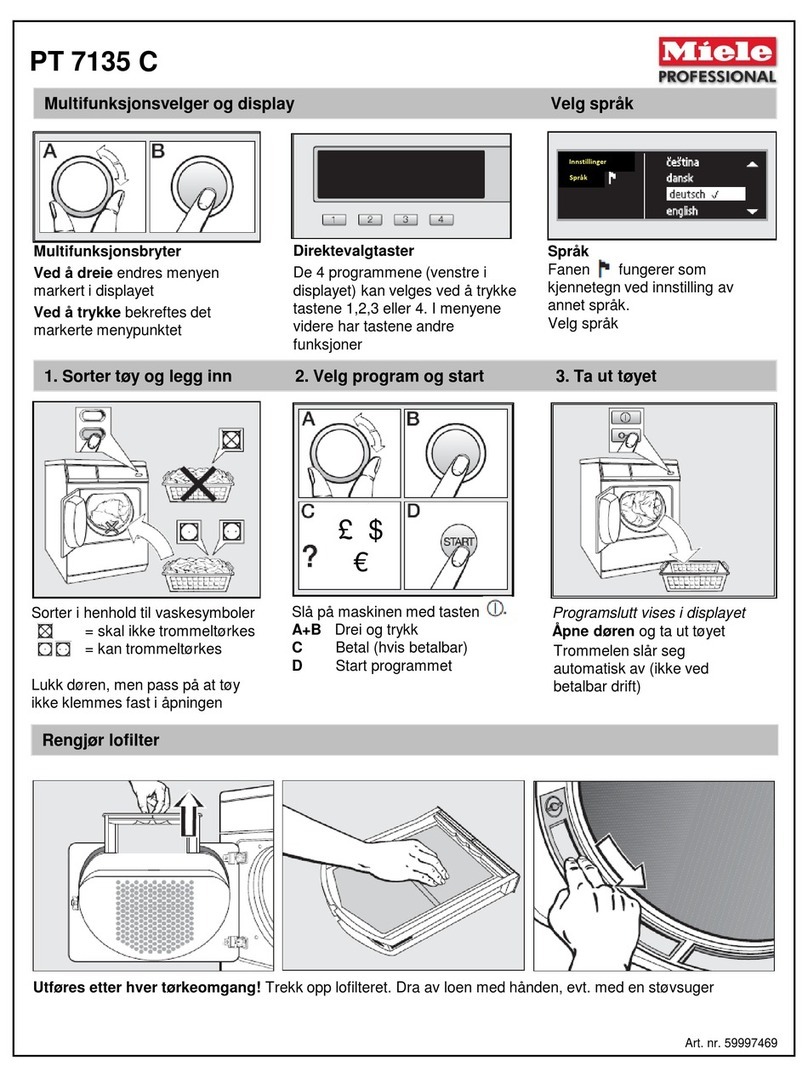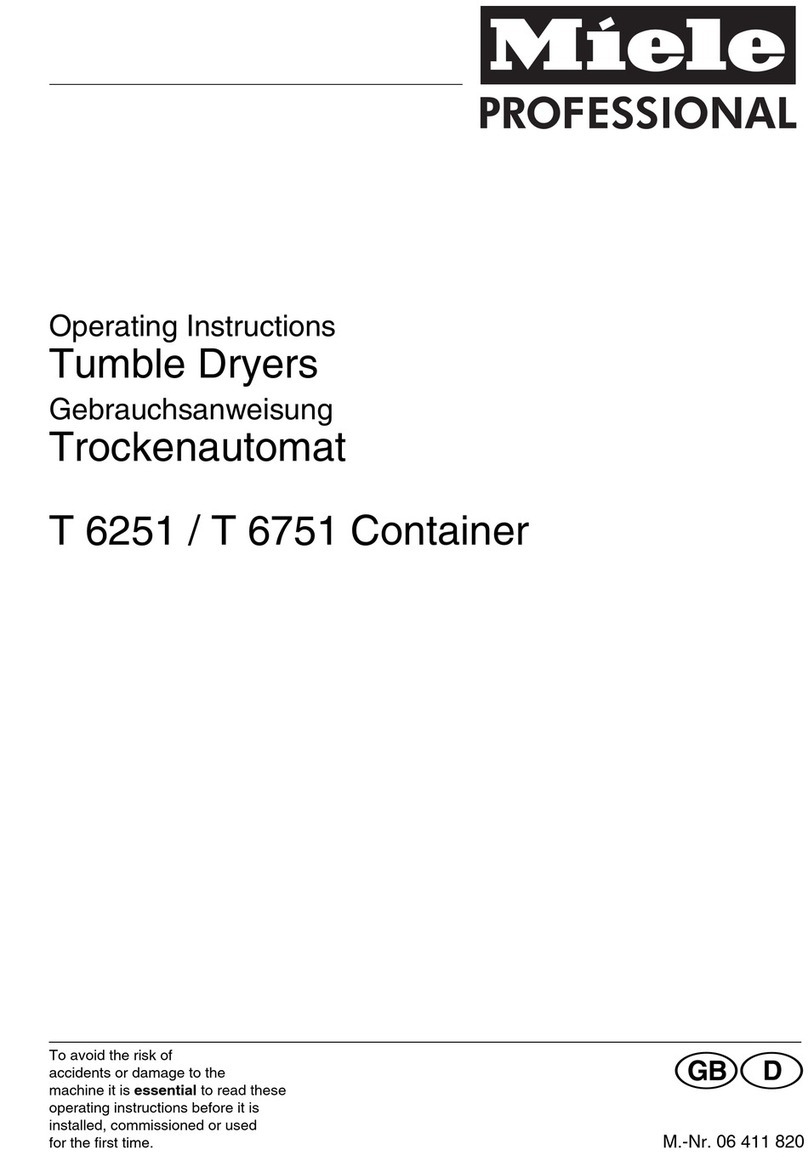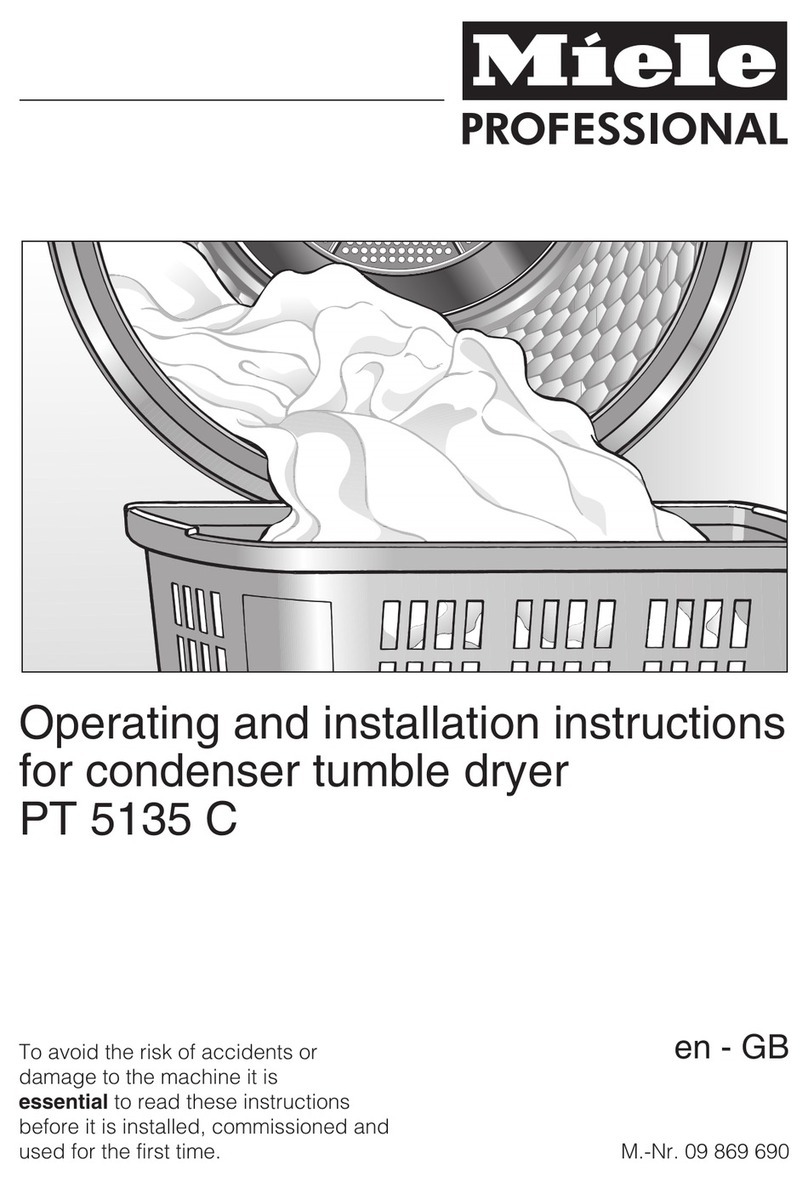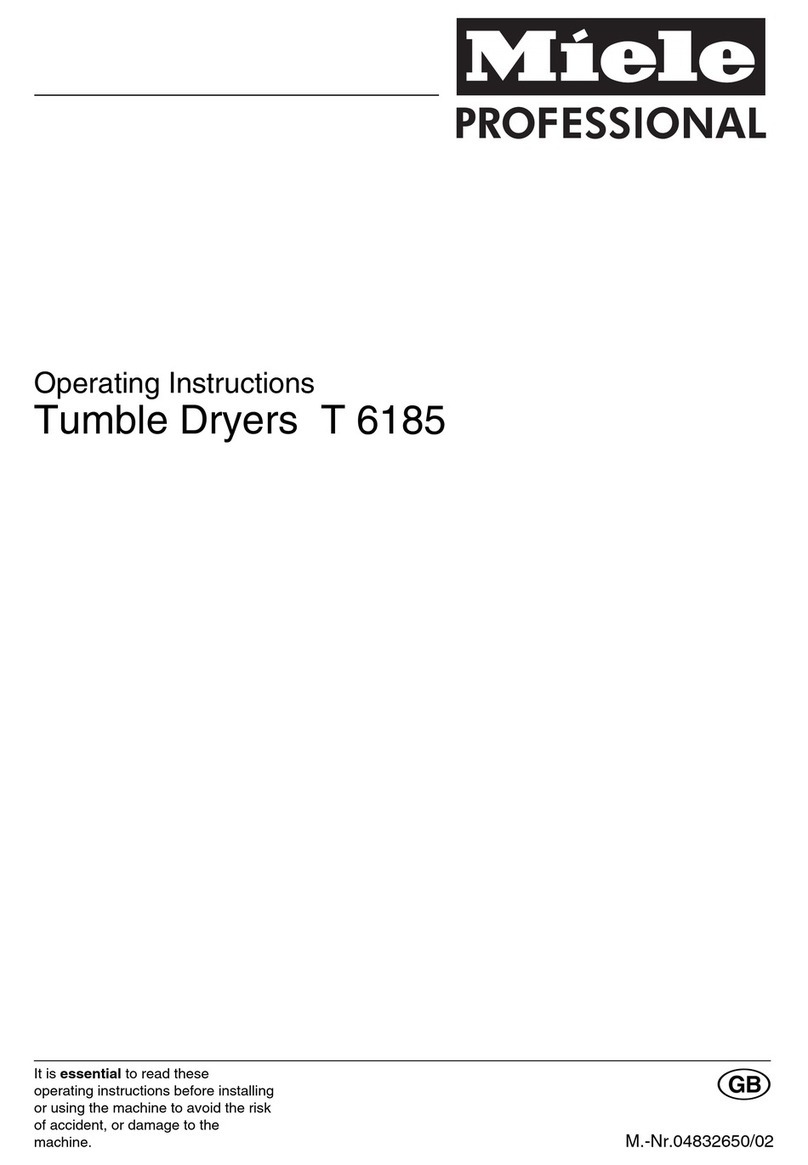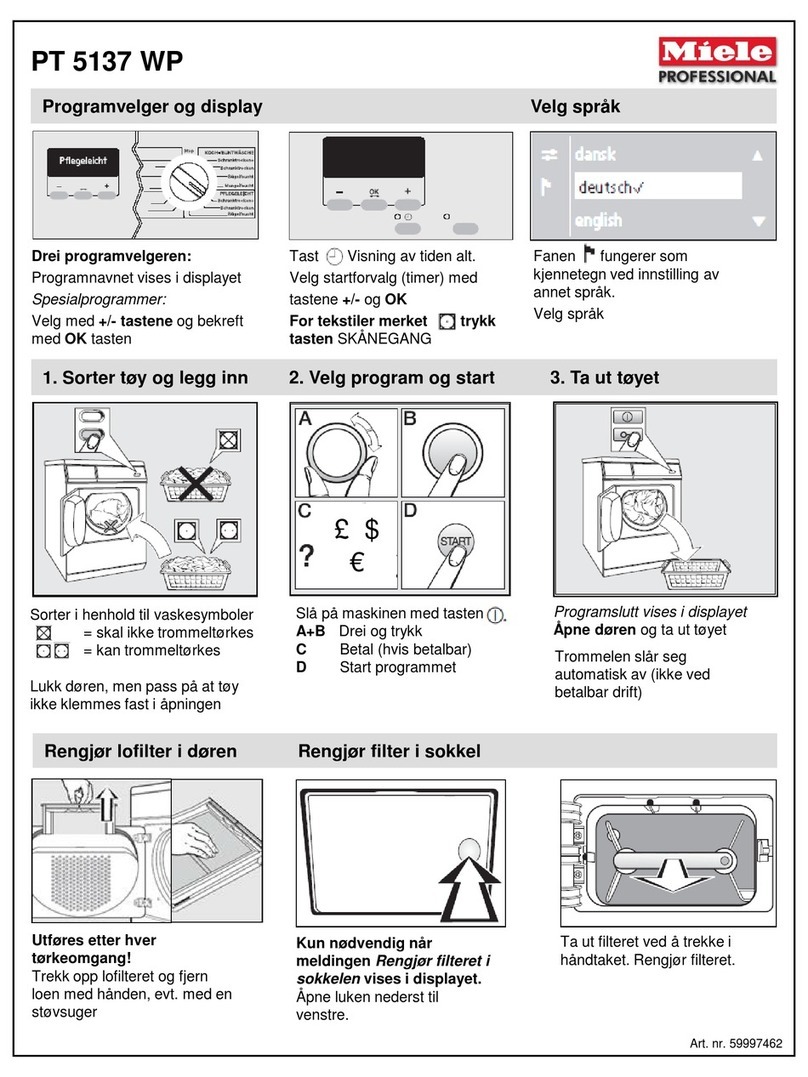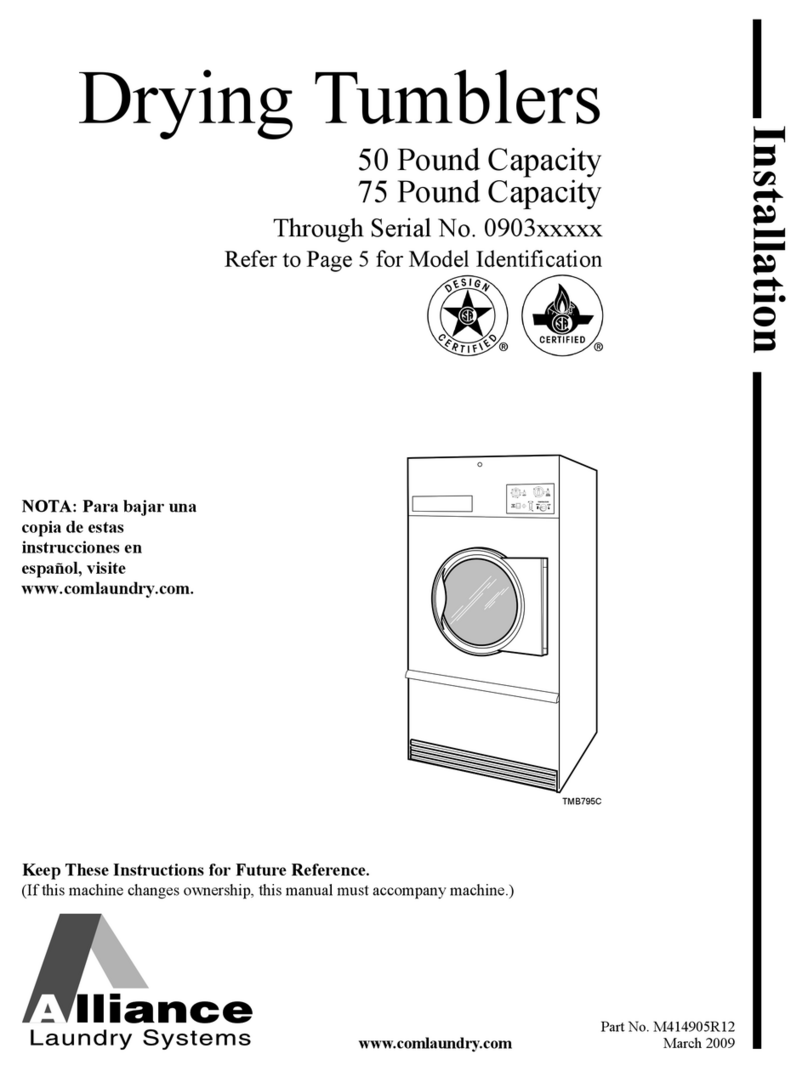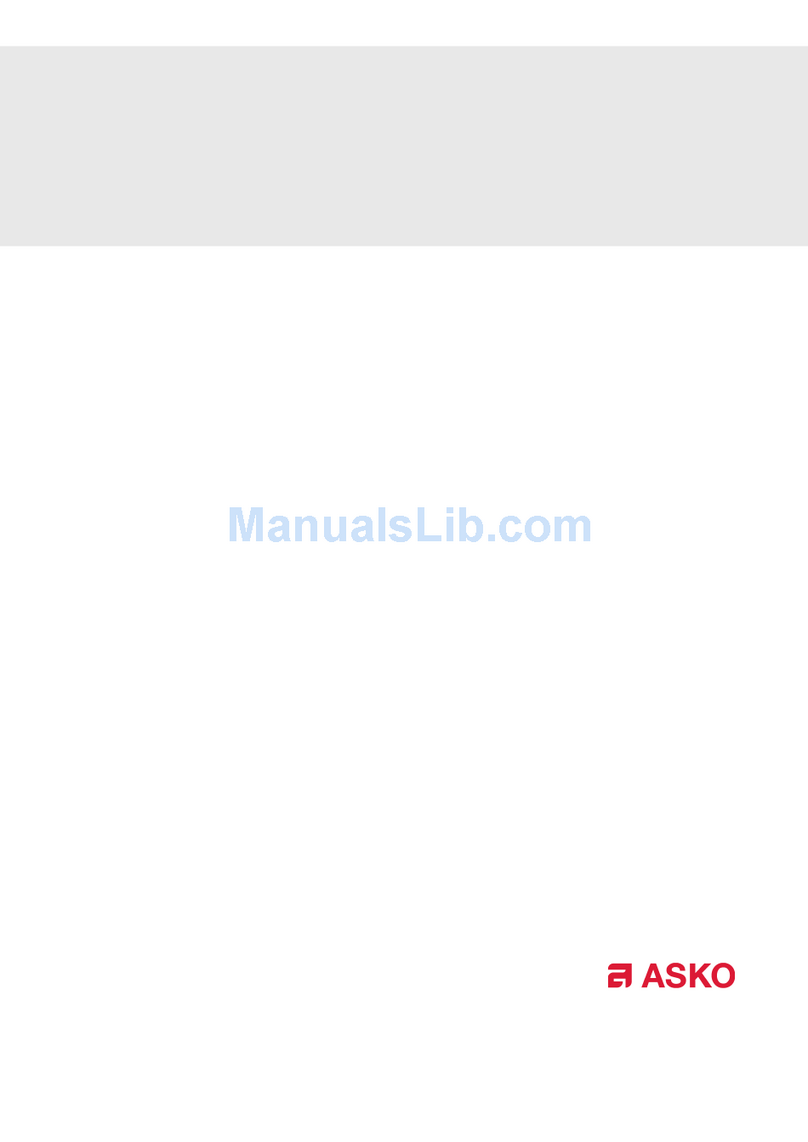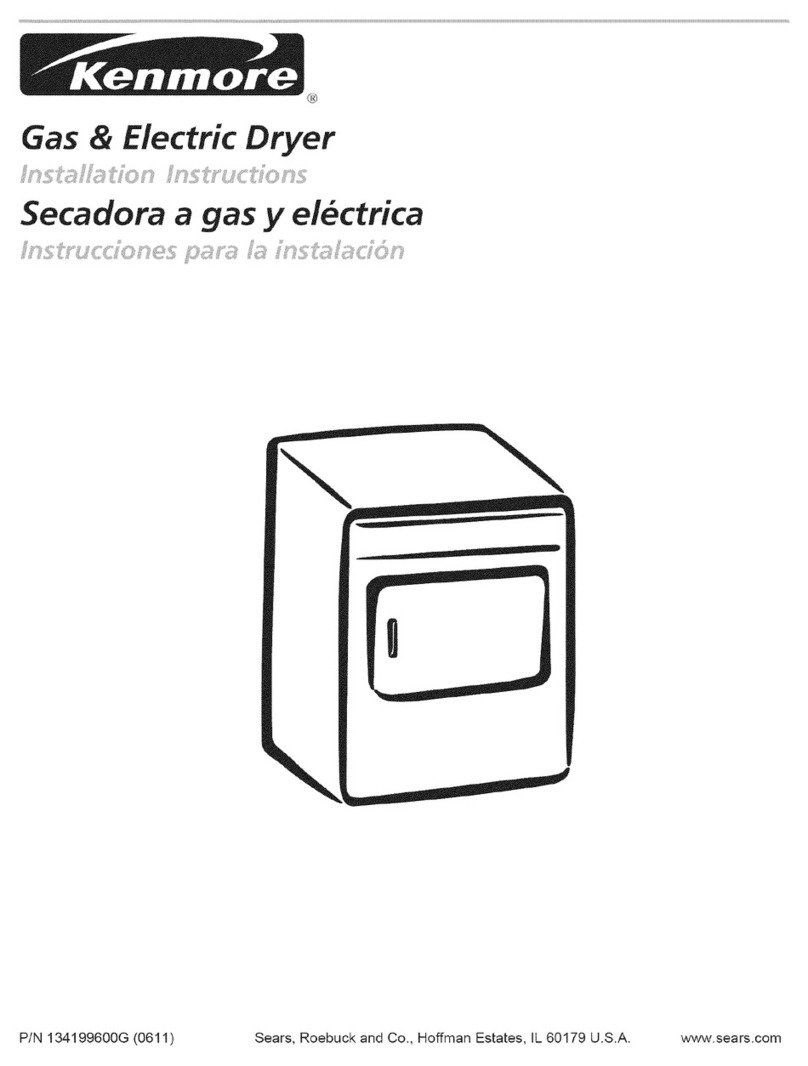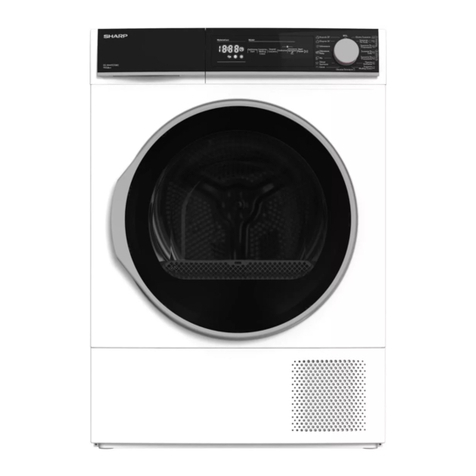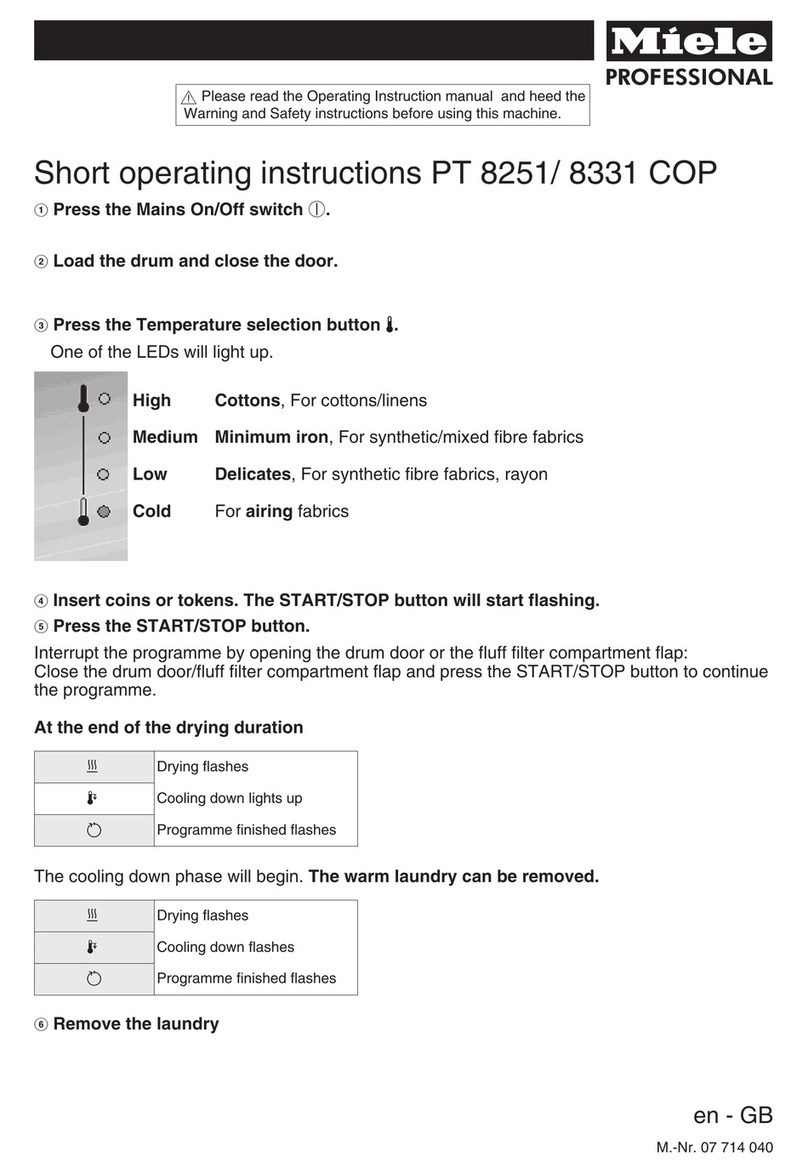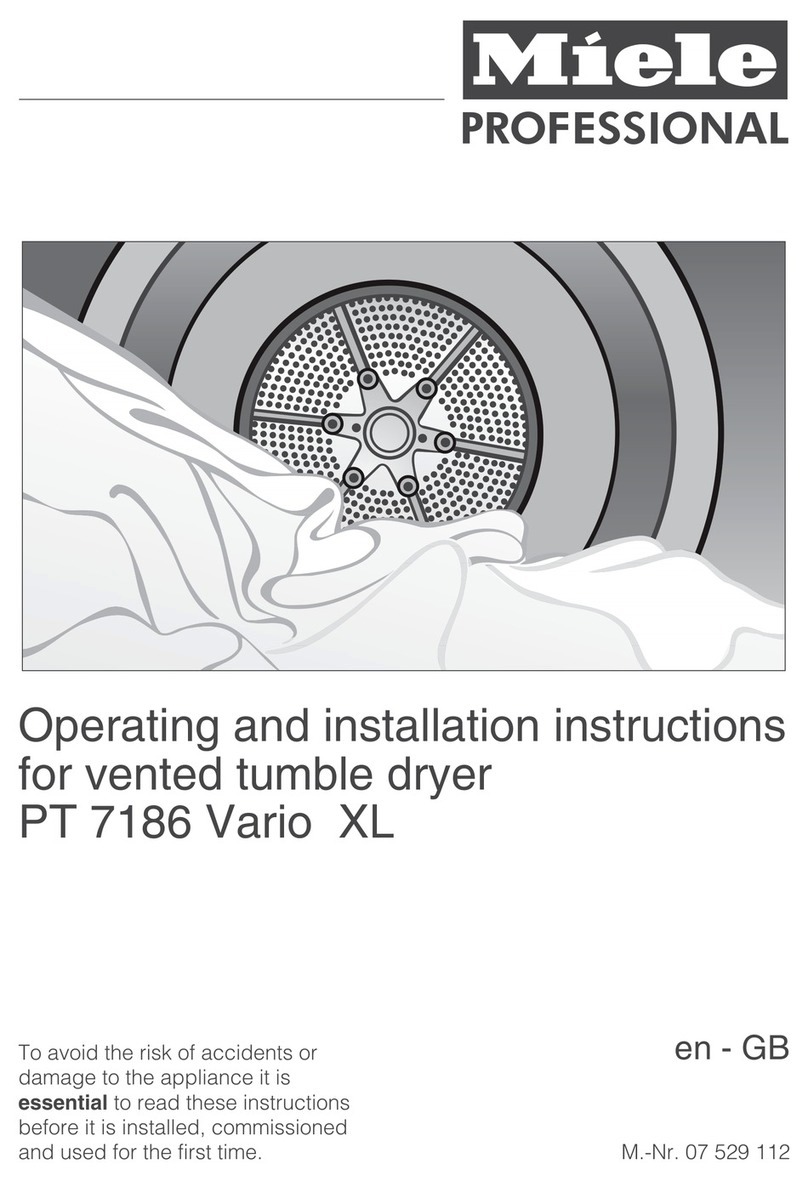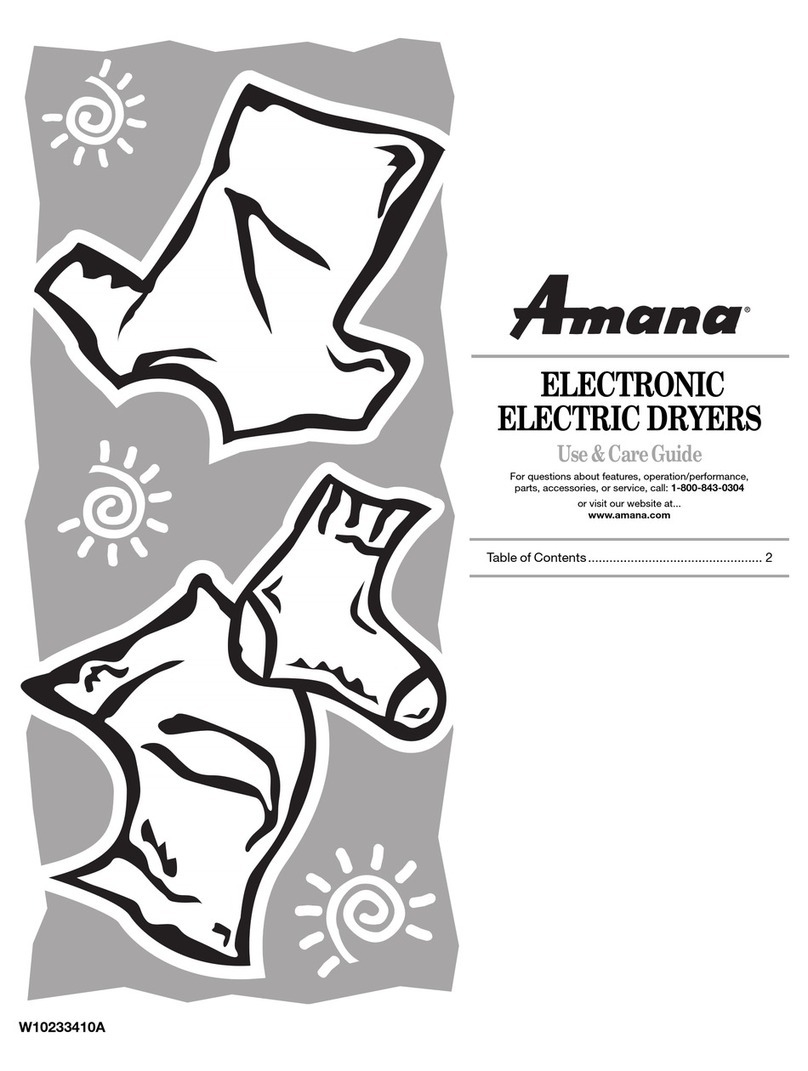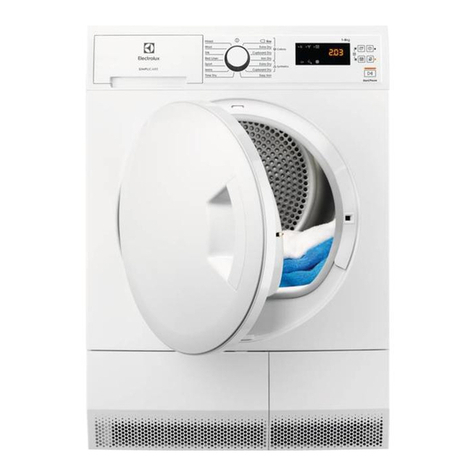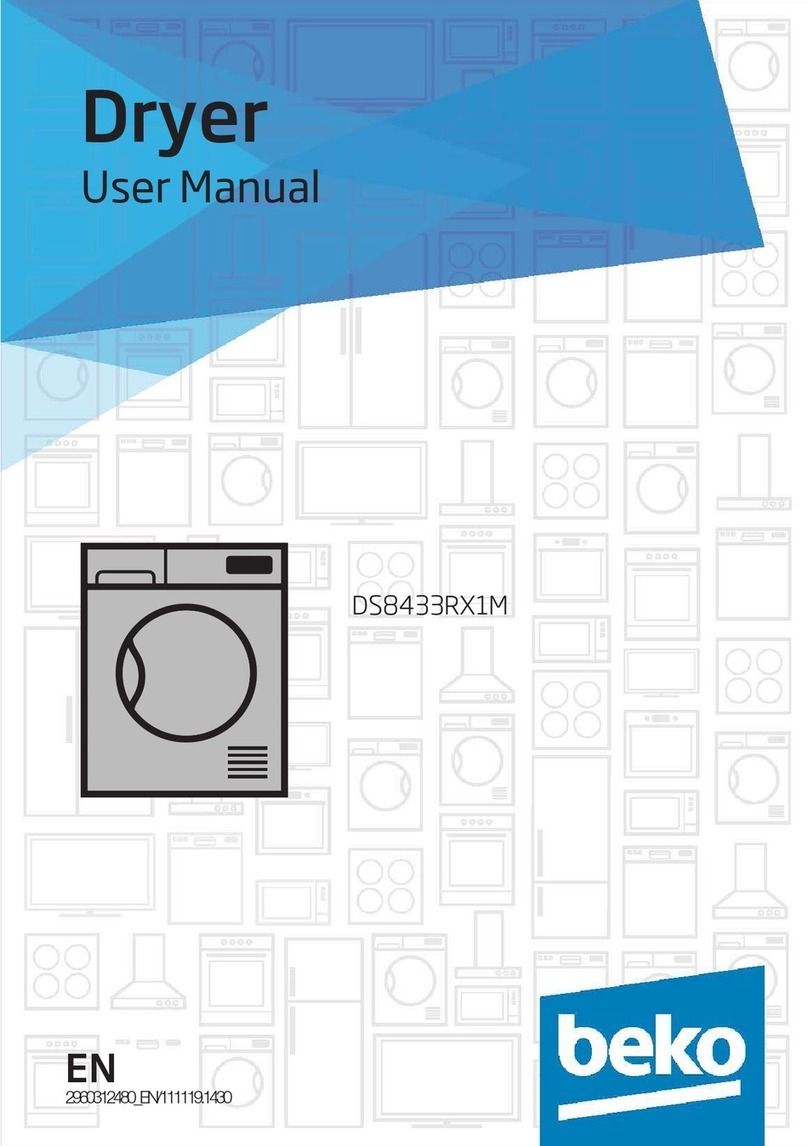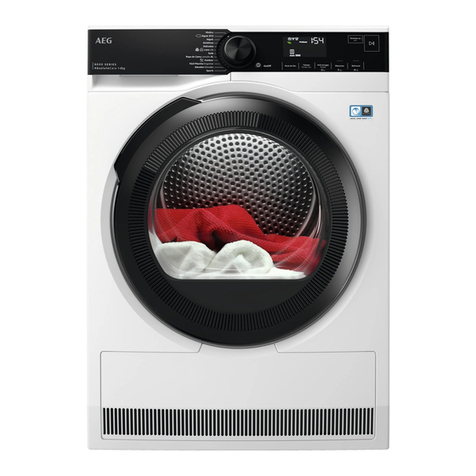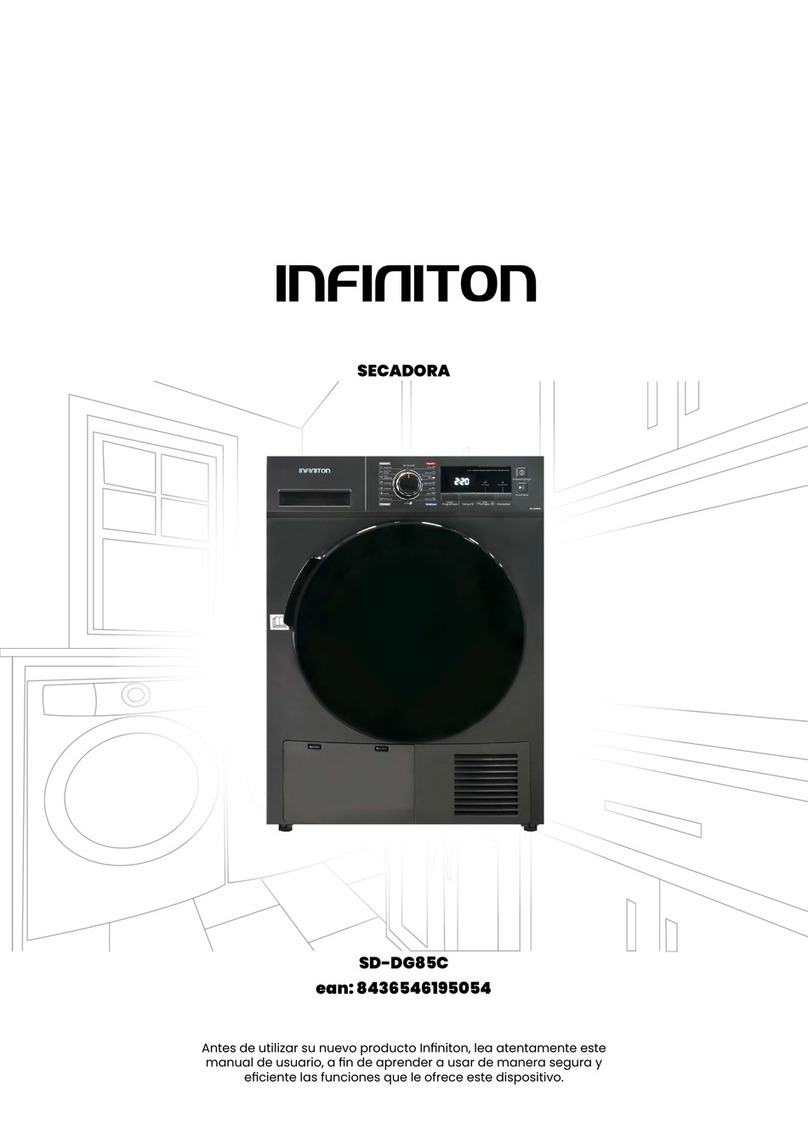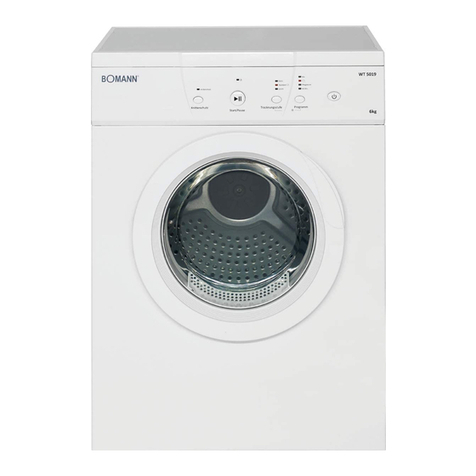Contents
3
Caring for the environment ................................................................................................2
Tips for saving energy ........................................................................................................... 2
Warning and Safety instructions........................................................................................5
Description of the machine ..............................................................................................11
Drying .................................................................................................................................13
Laundry preparation ............................................................................................................ 13
Important notes about drying.............................................................................................. 14
Before using for the first time.............................................................................................. 15
Commission the machine............................................................................................... 15
Switch the tumble dryer on ................................................................................................. 15
Load capacities (dry weight) ............................................................................................... 15
Selecting a programme ....................................................................................................... 16
Lowering the temperature ................................................................................................... 17
At the end of the programme .............................................................................................. 17
After the end of a programme ............................................................................................. 18
Interrupting a programme.................................................................................................... 18
Adding or removing individual items .............................................................................. 19
To continue the drying programme ................................................................................ 19
To switch the tumble dryer off........................................................................................ 19
Reprogramming.................................................................................................................20
Changing standard options................................................................................................. 20
To access programming level.............................................................................................. 20
Go to programming level................................................................................................ 20
Example of reprogramming ................................................................................................. 21
To alter the buzzer at the end of a programme .............................................................. 21
Reprogramming for the visually impaired....................................................................... 21
Programmable functions ..................................................................................................... 22
Problem solving guide ......................................................................................................24
Trouble shooting.................................................................................................................. 24
What to do if...................................................................................................................... 24
Service................................................................................................................................. 25
Cleaning and care .............................................................................................................26
Cleaning the tumble dryer ................................................................................................... 26
Cleaning the fluff filters........................................................................................................ 27
Cleaning the filter behind the air inlet.................................................................................. 28
Installation and connection ..............................................................................................29
Installation requirements ..................................................................................................... 29
General operating conditions .............................................................................................. 29
Transporting the machine.................................................................................................... 29
Removal of transport packaging .................................................................................... 29
Set up .................................................................................................................................. 30
Securing the machine.......................................................................................................... 31
Fitting the programme card................................................................................................. 31
Electrical connection ........................................................................................................... 32
Air intake vent...................................................................................................................... 33
Air outlet vent ...................................................................................................................... 33
Condensate drainage .......................................................................................................... 33
